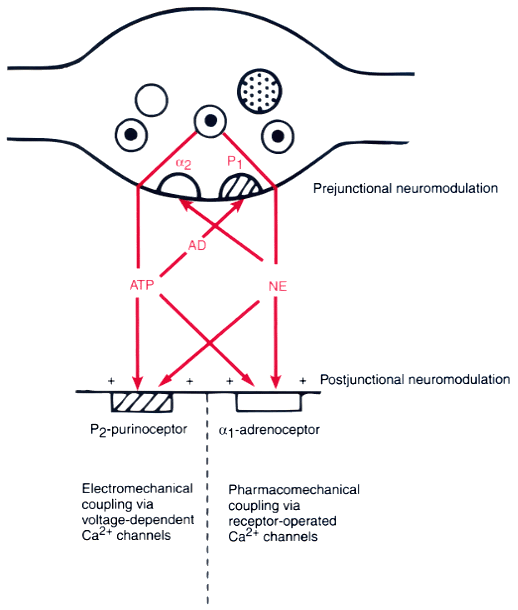 |
 |
Figure 16-2
The diagram shows that adenosine triphosphate (ATP) and
norepinephrine (NE) are released as cotransmitters from the sympathetic nerves supplying
the vas deferens and some blood vessels. ATP acts on P2
-purinoceptors
on the smooth muscles to initiate excitatory junction potentials, action potentials,
and a fast initial contraction involving electromechanical coupling through voltage-dependent
calcium (Ca2+
) channels. NE acts on α1
-adrenoceptors
to produce the second, slower phase of the contraction by pharmacomechanical (or
at least spike-independent) coupling through receptor-operated Ca2+
channels.
Prejunctional α2
-adrenoceptors and P1
-purinoceptors
can reduce transmitter release when activated by NE and adenosine (AD), respectively
(i.e., prejunctional neuromodulation), whereas NE and ATP enhance each other's actions
(i.e., postjunctional neuromodulation). (Adapted from Burnstock G: Local
mechanisms of blood flow control by perivascular nerves and endothelium. J Hypertens
Suppl 8:S95, 1990.)

 |
